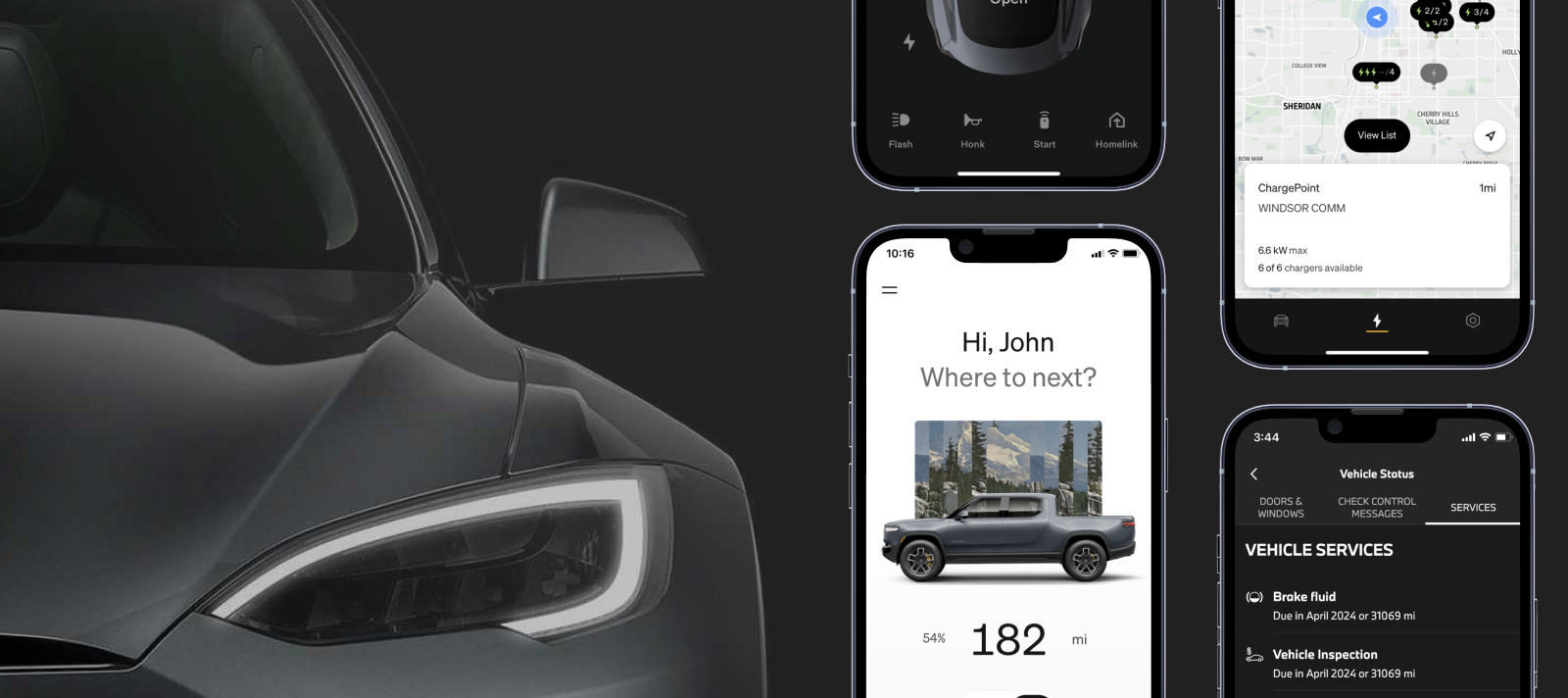
A Review of Automotive Mobile Application Design
Carson Monroe | 07/25/2022
Understanding the Industry
Nearly every major car manufacturer has a mobile application that allows users to monitor, control, and navigate their vehicle. A Green Car Reports article found that 70% of electric vehicle owners used an app on a regular basis to monitor charging and available range. As connectivity improves and electric vehicles become more ubiquitous, car buyers are increasingly viewing mobile apps as a part of the car and factoring its features and quality into purchasing decisions. This broad review summarizes the current state of the automotive iOS and Android app landscape, including user feedback and our own insights.
-
Study: EV owners use automaker smartphone apps often but aren't so happy with them
Green Car Reports
-
IoT Trends in the Automotive Industry
Telenor IOT
-
Top 5 Automotive Technology Trends for 2022
Gartner
-
Application Of IoT In Automotive Industry | Future Of Automobiles
Biz4intellia
-
The 5 top Connected Car challenges faced by automotive OEMs
Ericsson
Humble Origins
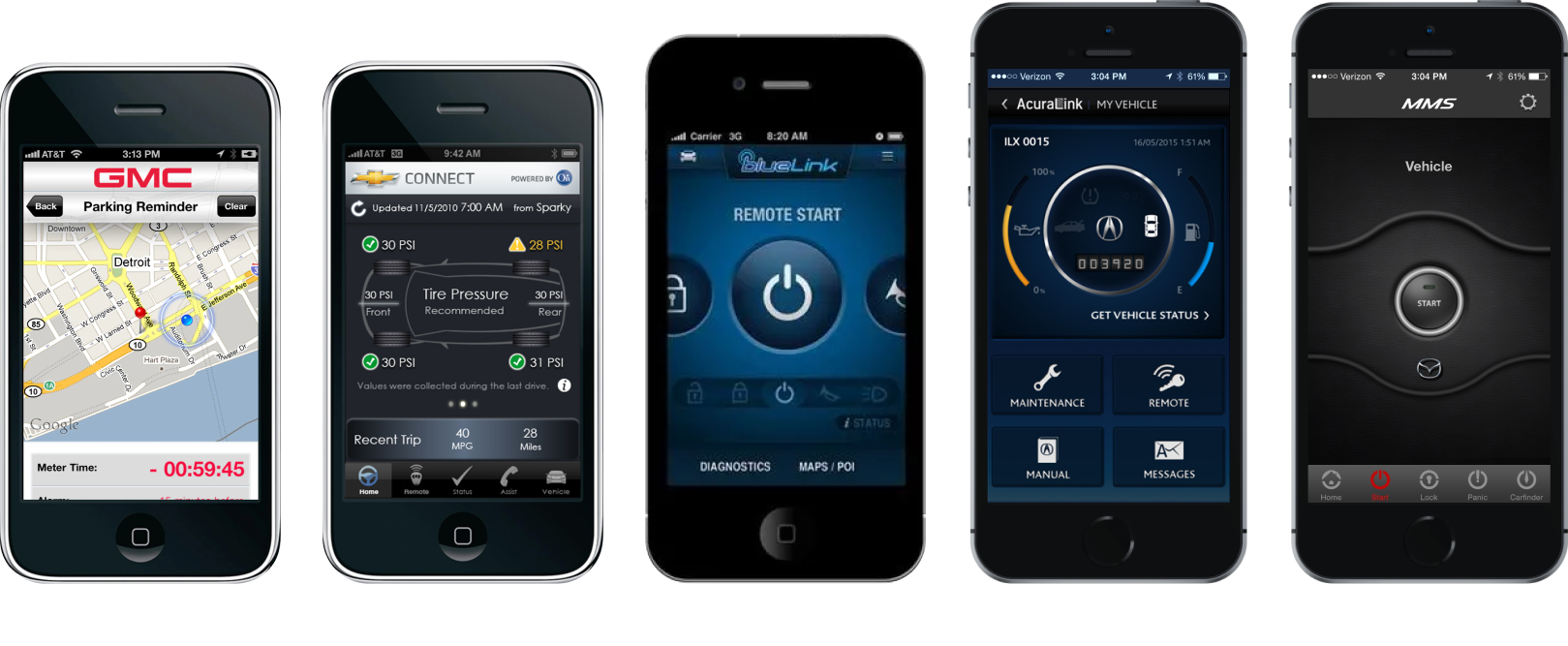
While current automotive apps look and feel vastly different from their initial versions, the core functionality has remained the same. Since the early 2010s, users continue to expect functionality such as checking charge and gas levels, turning on and off a vehicle, and controlling the climate. These initial apps set the stage for the huge leaps in functionality, technology, and design that we are seeing in mobile applications today. We felt it was important to first look back in order to better understand how the industry got to where it is today.
Reviewing Existing Apps
Our design team reviewed the user interfaces and functionality of existing EV mobile applications. The Genesis and BMW apps provide a demo to explore, while the Tesla mobile app, Harley Davidson, Rivian, Jaguar, and other apps were available for hands-on testing. While not an exhaustive list of all available apps, they are a representative cross section and a strong starting point to compare and benchmark features.
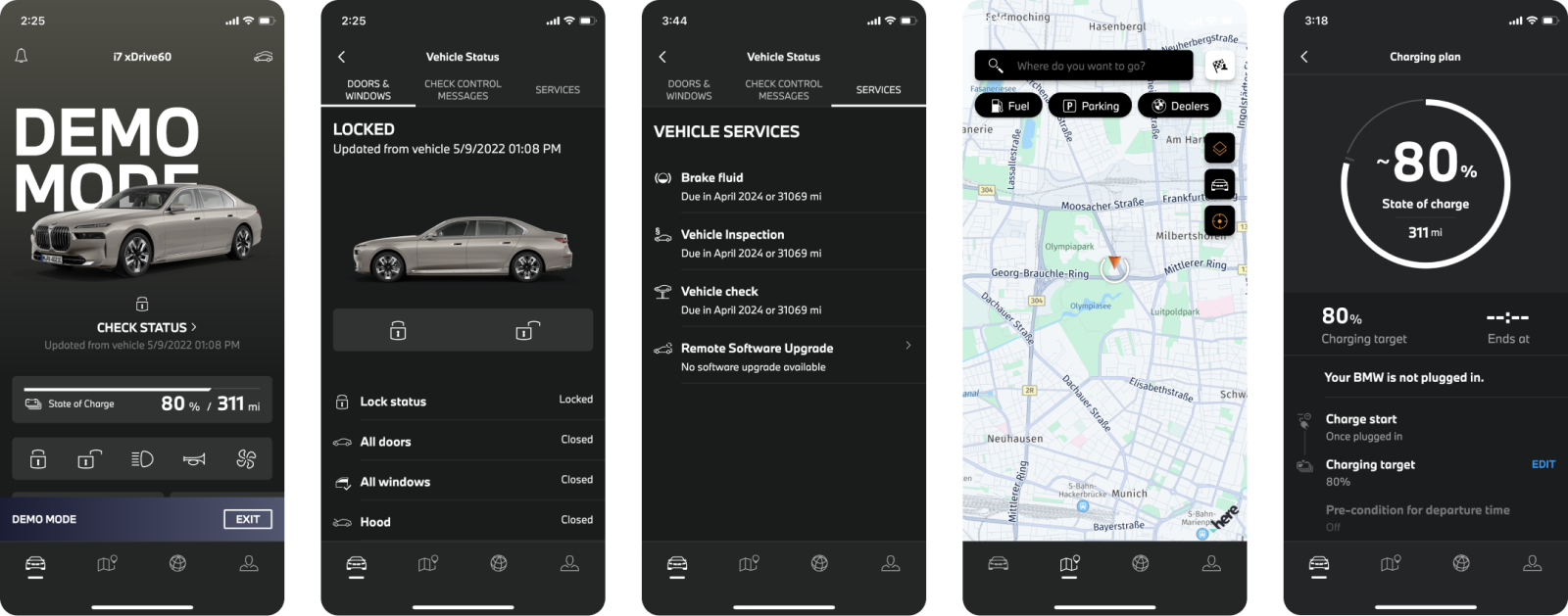
BMW – My BMW
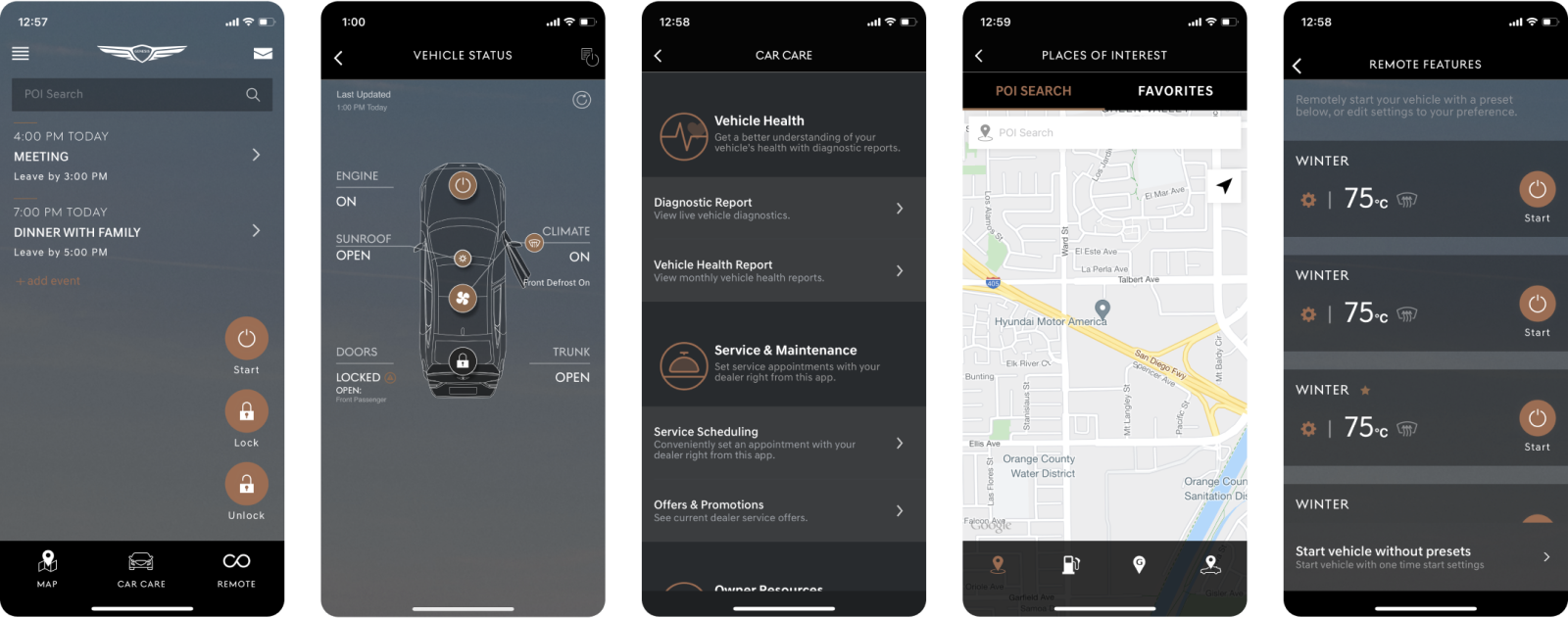
Genesis – Genesis Intelligent Assistant
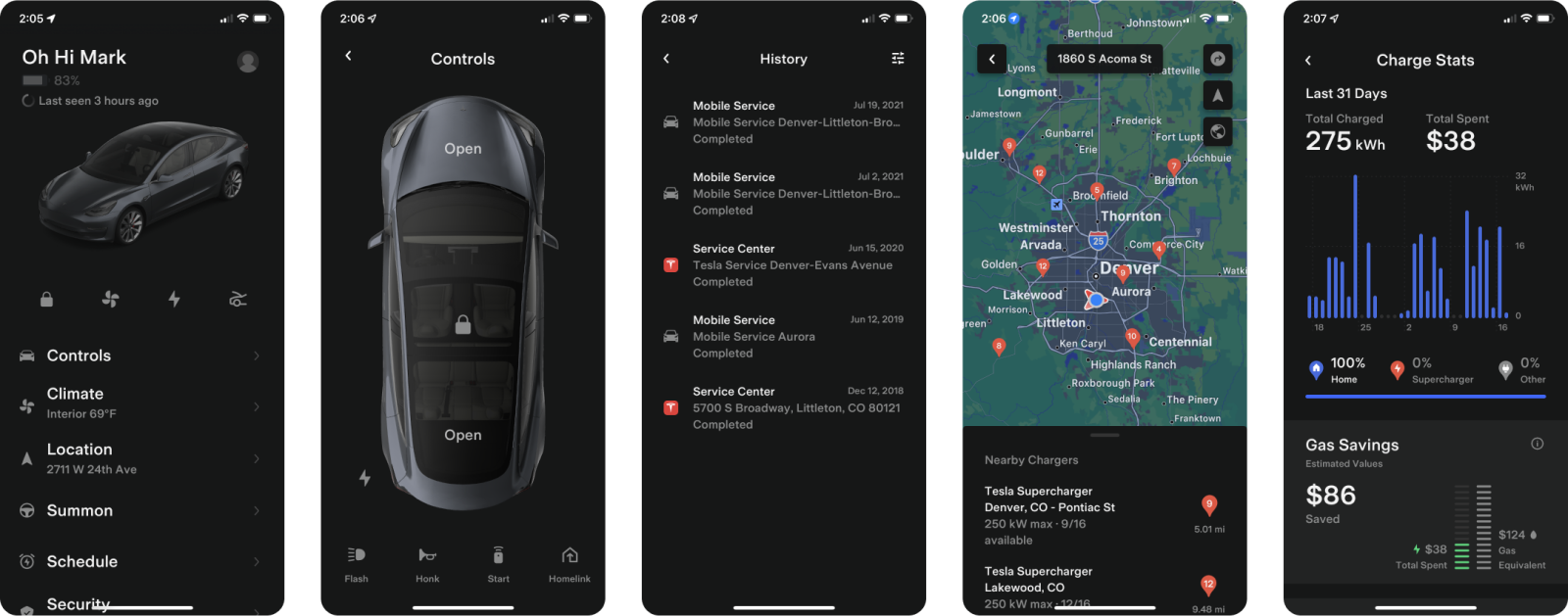
Tesla – Tesla
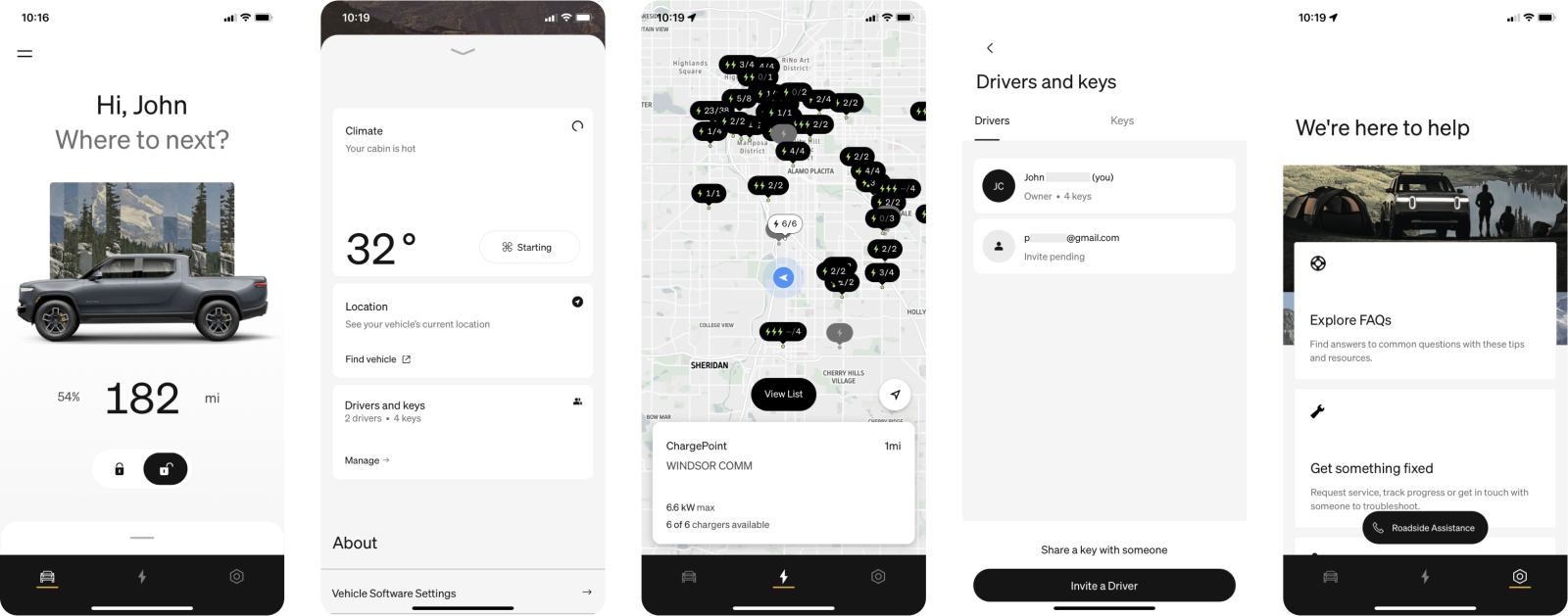
Rivian – My Rivian
User Reviews
We also collected reviews from users on the app store to learn about what’s working and what can be improved. Some reviews simply praise features or call out basic issues, while others recommend potential enhancements that can be used to design a user-focused application.
BMW
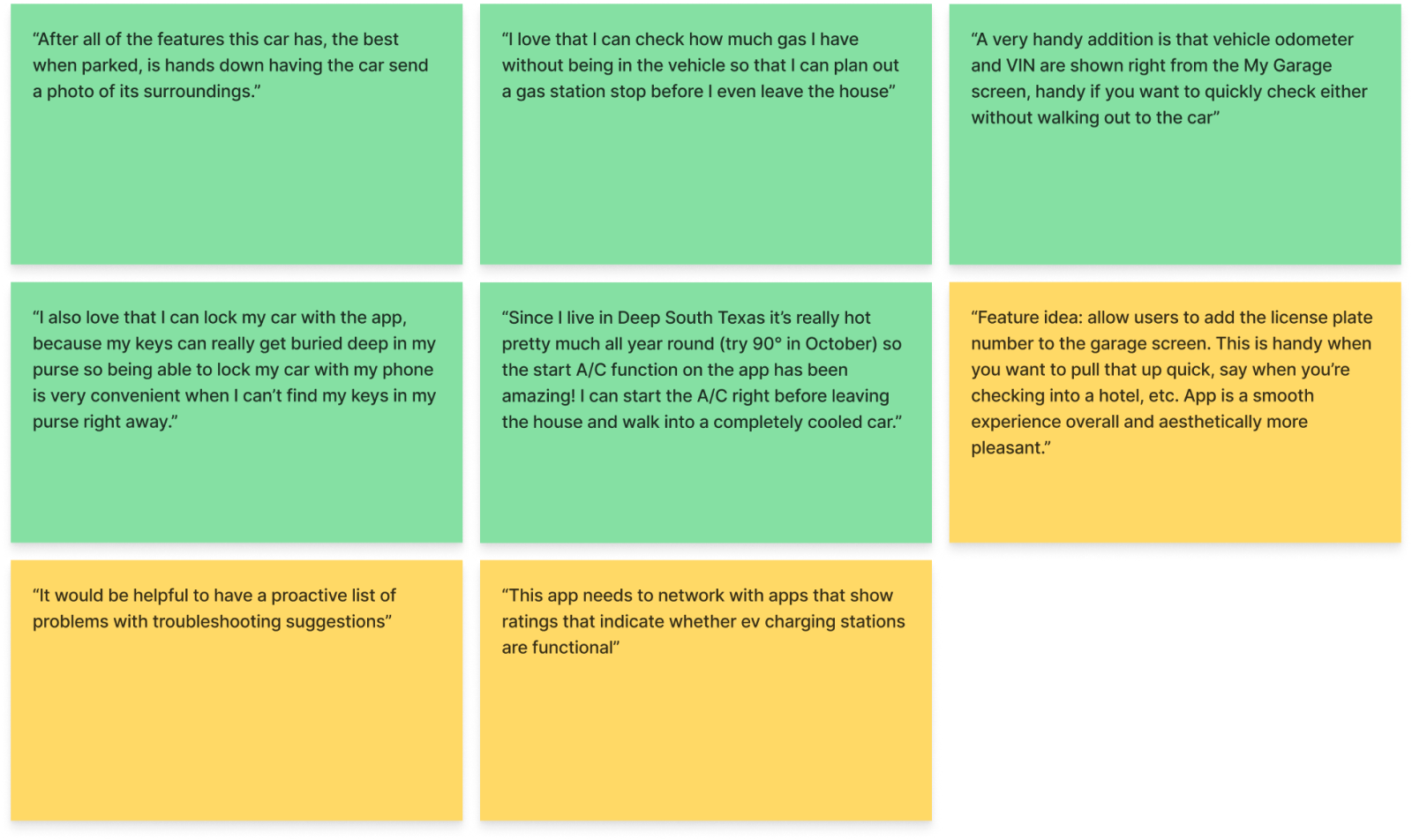
Genesis
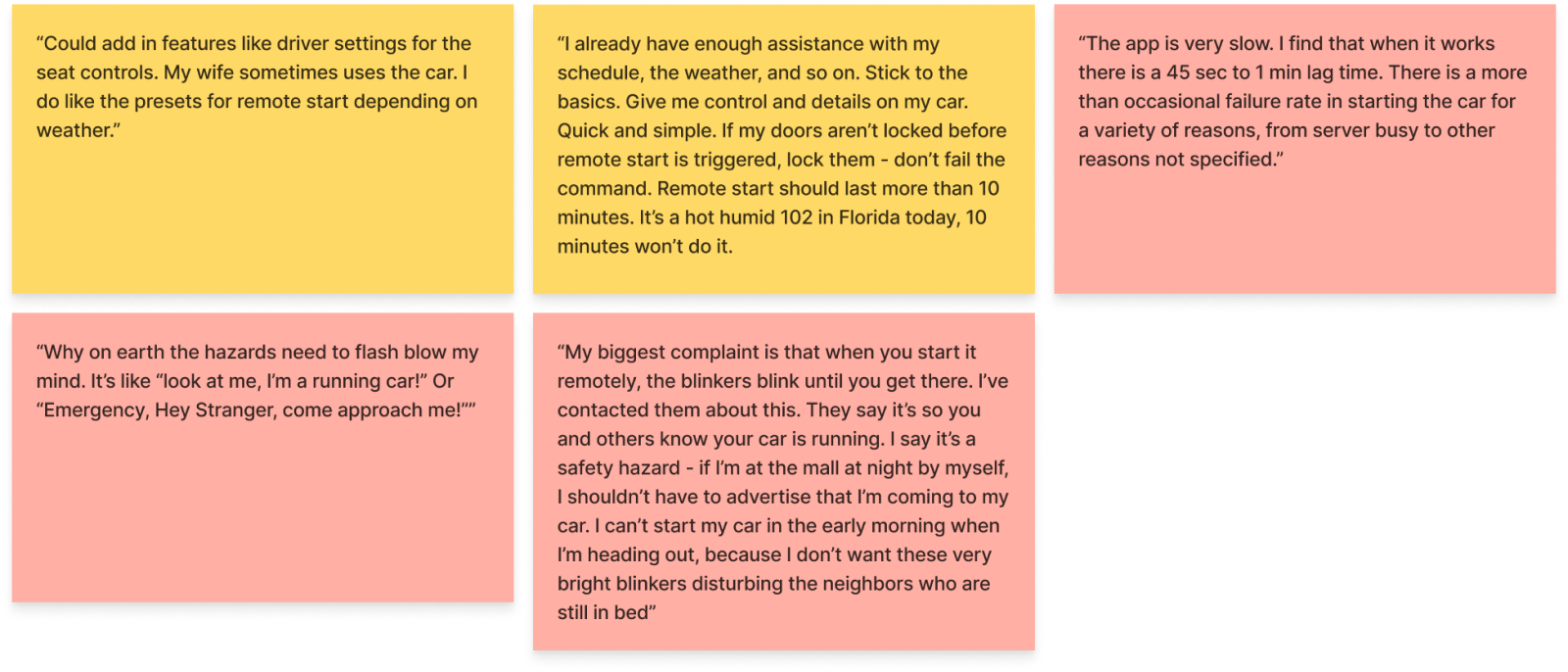
Polestar

Rivian
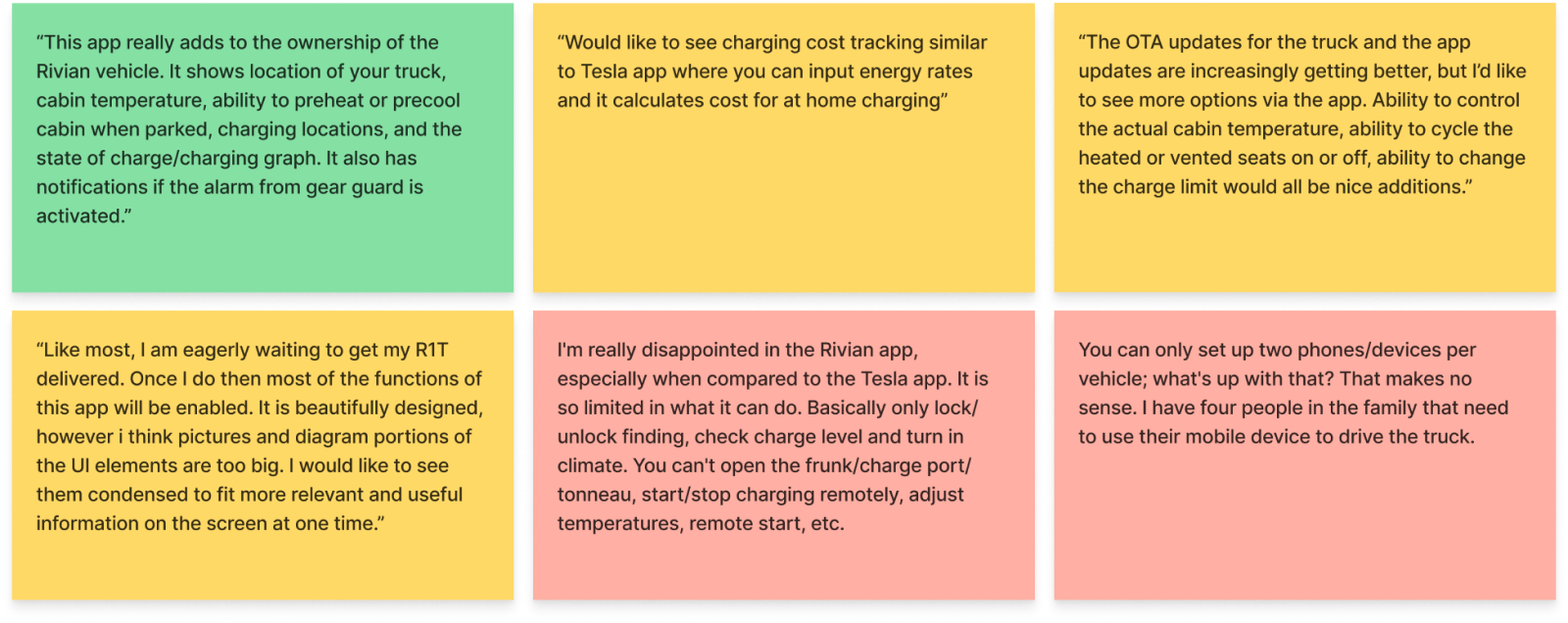
Tesla
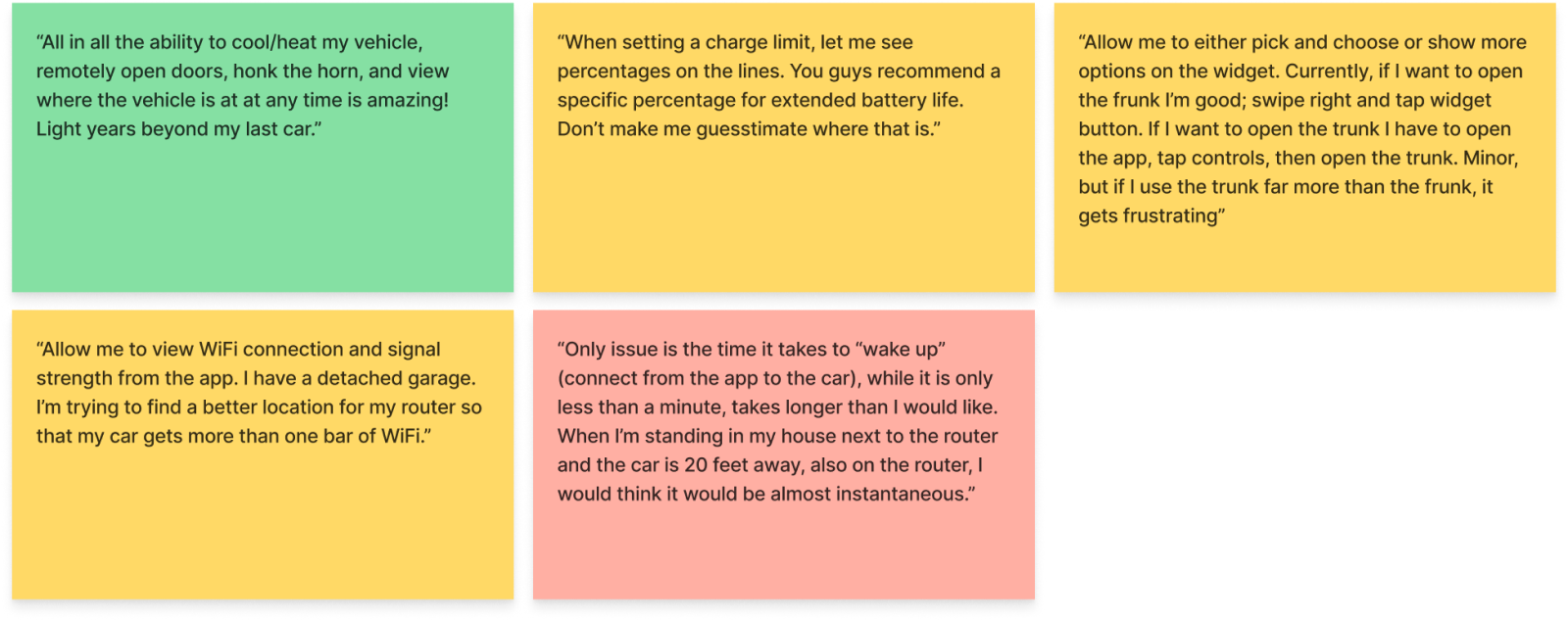
User Expectations
Based on our understanding of users’ experiences with automotive mobile apps, we compiled a list of key themes from our user experience research and offered basic solutions to consider during design and development of automotive application design.
Users expect all in-car functions to be accessible through the app
If a user can complete an action in their car, they expect to be able to do that same action through the app.
Users expect fast apps
If a long wait time is inevitable for a certain function, offer a progress indicator or tips to improve connectivity.
Users expect to be able to control their car without limitation
Defaults and grouped options frustrate users and lack customization. Allow each feature to be controlled individually without limitation.
Troubleshooting information should be easily accessible and as detailed as possible
Apps should at least provide a help center or frequently asked questions section. Tooltips and information modals can also be utilized on individual screens for more specific details.
Users frequently use their automotive app to check various statuses
Gas level, charge percentage, location, and exterior cameras are just a few examples of items that users expect to monitor.
Use maps if they offer unique functionality
Many mapping apps already exist to locate charging stations and maintenance facilities. If included, maps should offer functions or services unique to a vehicle’s manufacturer.
Core Features
Our research allowed us to compile a list of features that we feel are essential for any automotive mobile application. At least one of these features was present in each app we reviewed, none provided a completely thorough feature set.
Basic Vehicle Info
- Driver name/profile
- Model
- VIN
- Mileage
Remote functions
- Start/stop car
- Lock/unlock doors
- Flash lights
- Honk horn
- History
Maintenance
- Schedule service
- Service history
- Monthly vehicle reports
- Engine
- Brakes
- Transmission
- Power steering
Status
- Remote cameras
- Charge
- Engine
- Sunroof/windows
- Locks
- Heat/AC
- Trunk/hood
- Connection
Map
- Gas
- EV charging
- Dealers
- Vehicle location
- Search
- Favorites
Owner resources
- Accident/roadside assistance
- Owner’s manual/guides
- Videos
- FAQs
Our Analysis
Mobile apps in the automotive industry have come a long way in the past few years, and they will undoubtedly continue to grow in the future. While we were encouraged to see some innovative features in these apps, there is room to improve functionality and user experience.
Comprehensive Feature Set
As previously mentioned, none of the apps we observed provided a complete list of our identified core features. The Tesla app is the closest, but falls short by lacking connectivity status and responsiveness, along with some basic UI misses such as button state confusion.
Unique Features
Automotive mobile app design is a relatively new segment and there has not been sufficient time to mature and innovate beyond basic controls. Now that users have an expectation of what these mobile apps can do, companies would do well to invest in more capable technology and a design team that makes the most of it.
Tesla is a good example of a company striving for unique functionality and features. Their app allows users to track their spending on electricity, as well as savings relative to gas. As electric vehicles become more common, other manufacturers should focus on utilizing data to provide their customers insights into their automobiles. Tesla has a head start over most other automakers and it shows.
Tesla also allows users to record videos of their surroundings and view their vehicle cameras remotely in an effort to deter theft. It appears that very few apps are taking advantage of these cameras, and we’d like to see more car companies tap into this resource. While theft prevention is vital, the cameras can also be used to peek into the weather outside, double check your parking spot and view vehicles approaching your home.
Connectivity
Many of these iOS and Android apps provide a striking user interface that aligns with the aesthetics of the brand, however, this beauty often runs only skin deep when users are frustrated by poor connectivity or lag. Many user reviews and some observations of our own cars have shown that connectivity is a key issue when remotely controlling a car. Providing users with a status indicator of their connection can make a large perceptual difference, but we look forward to seeing improvements in hardware and software that will allow for greater range, responsiveness, and reliability.
User Feedback
We were excited to see the high number of reviews in the app store for all levels of automotive brands. It is evident that users are not willing to settle for a sub par app and would likely choose a vehicle based on its connected capabilities. We are constantly engaging with users to understand their wants and needs and we encourage automotive companies to do the same.
Conclusion
Automotive mobile apps are becoming just as important as the vehicles they control. Like any other connected device, users expect these apps to be quick, reliable and capable of performing advanced functions. Our research and analysis provides automotive companies with a valuable starting point on their next development or design endeavors. We look forward to continuing to provide our research and updates on trends in the automotive industry.